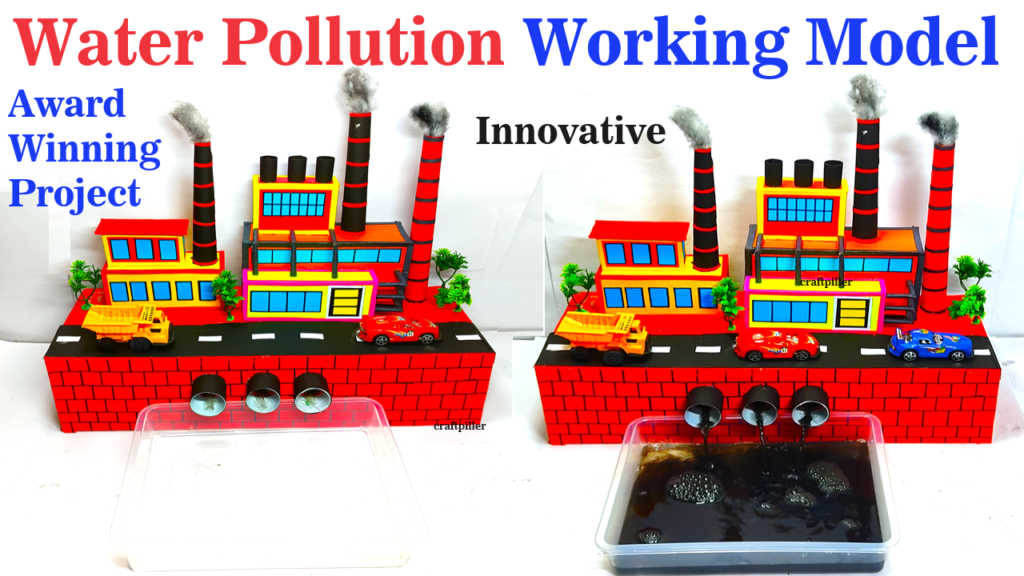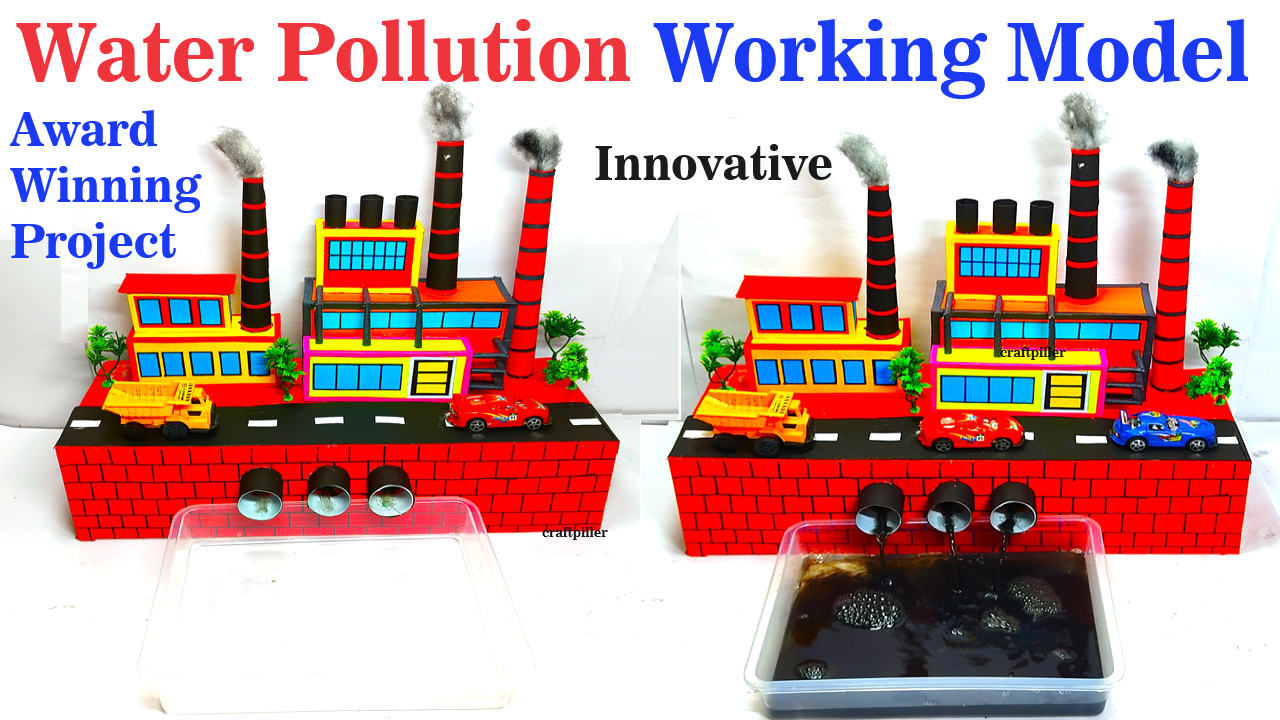Creating a water pollution working model using a DC water pump, two plastic trays (one for holding polluted water and another for pure water), cardboard, and colored paper can be an engaging and educational project.

Here’s a step-by-step guide on how to build it:
Materials needed:
- Cardboard (for the base and structures)
- Colored paper or markers (for decorating)
- DC water pump
- Plastic trays (2)
- Clear plastic tubing
- Small containers or pollutants (to represent pollutants)
- Clear water (to represent pure water)
- Glue or adhesive
- Scissors
Step by Step Video instructions:
- Prepare the Base:
- Take a piece of cardboard and cut it into a suitable size to serve as the base of your model. This will provide a stable platform for your model.
- Create Structures:
- Use cardboard to create structures such as buildings or factories. These structures represent sources of water pollution.
- Decorate the structures using colored paper or markers to make them visually appealing.
- Set Up the Plastic Trays:
- Place one plastic tray on each end of the cardboard base. Label one tray as “Polluted Water” and the other as “Pure Water.”
- Simulate Polluted Water:
- Fill the tray labeled “Polluted Water” with water dyed with food coloring to represent polluted water. You can also add small containers or pollutants (such as plastic pieces) to simulate different types of pollutants.
- Simulate Pure Water:
- Fill the tray labeled “Pure Water” with clear water to represent clean or purified water.
- Connect the Water Pump:
- Attach the DC water pump to the tray containing polluted water using clear plastic tubing. Ensure the pump is submerged in the polluted water.
- Connect the other end of the tubing to the tray containing pure water. This simulates the transfer of polluted water to the purification process.
- Power the Water Pump:
- Connect the water pump to a power source (such as a battery or power adapter) to activate it. The pump will start transferring water from the polluted tray to the pure tray through the tubing.
- Observe the Process:
- As the water pump operates, observe how polluted water is transferred from one tray to the other.
- Discuss the importance of water purification in removing pollutants and making water safe for human consumption and environmental health.
- Discuss Solutions:
- Use the model as a tool for discussing solutions to water pollution, such as implementing wastewater treatment systems, reducing industrial discharge, and promoting sustainable water management practices.
- Enhance Visual Appeal:
- Use colored paper or markers to add details and labels to your model, such as depicting filtration processes or illustrating the effects of pollution on aquatic life.
By following these steps, you can create a working model of water pollution using a DC water pump, plastic trays, cardboard, and colored paper. Adjustments can be made based on available resources and desired level of detail or complexity.

